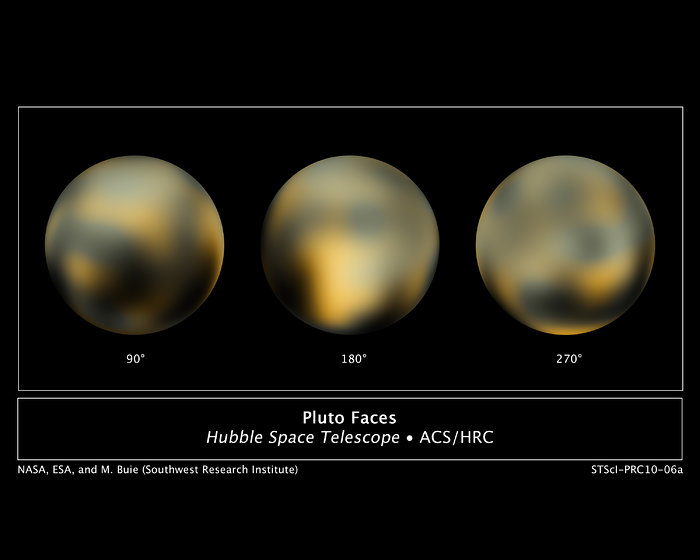The changing faces of Pluto
This is the most detailed view to date of the entire surface of the dwarf planet Pluto, as constructed from multiple NASA/ESA Hubble Space Telescope photographs taken from 2002 to 2003.
Hubble's view isn't sharp enough to see craters or mountains, if they exist on the surface, but Hubble reveals a complex-looking and variegated world with white, dark-orange, and charcoal-black terrain. The overall colour is believed to be a result of ultraviolet radiation from the distant Sun breaking up methane that is present on Pluto's surface, leaving behind a dark, molasses-coloured, carbon-rich residue.
The centre disk (180 degrees) has a mysterious bright spot that is unusually rich in carbon monoxide frost. This region will be photographed in the highest possible detail when NASA's New Horizons probe flies by Pluto in 2015.
The Hubble images are a few pixels wide. But through a technique called dithering, multiple, slightly offset pictures can be combined through computer-image processing to synthesize a higher-resolution view than could be seen in a single exposure. This series of pictures took four years and 20 computers operating continuously and simultaneously to accomplish.
Credit:NASA, ESA and M. Buie (Southwest Research Institute)
About the Image
About the Object
| Name: | Pluto |
| Type: | Solar System : Interplanetary Body : Dwarf planet |
| Category: | Solar System |
Colours & filters
| Band | Wavelength | Telescope |
|---|---|---|
| Optical B | 435 nm |
Hubble Space Telescope
ACS |
| Optical V | 555 nm |
Hubble Space Telescope
ACS |
